After a cool and wet spring, the nasturtiums always come. Fields of nasturtiums—all over my garden, popping up through the mulch, under the stairs, between the cracks, volunteering everywhere.
Read next: Nasturtium Leaves: The Most Waterproof Surface Ever?
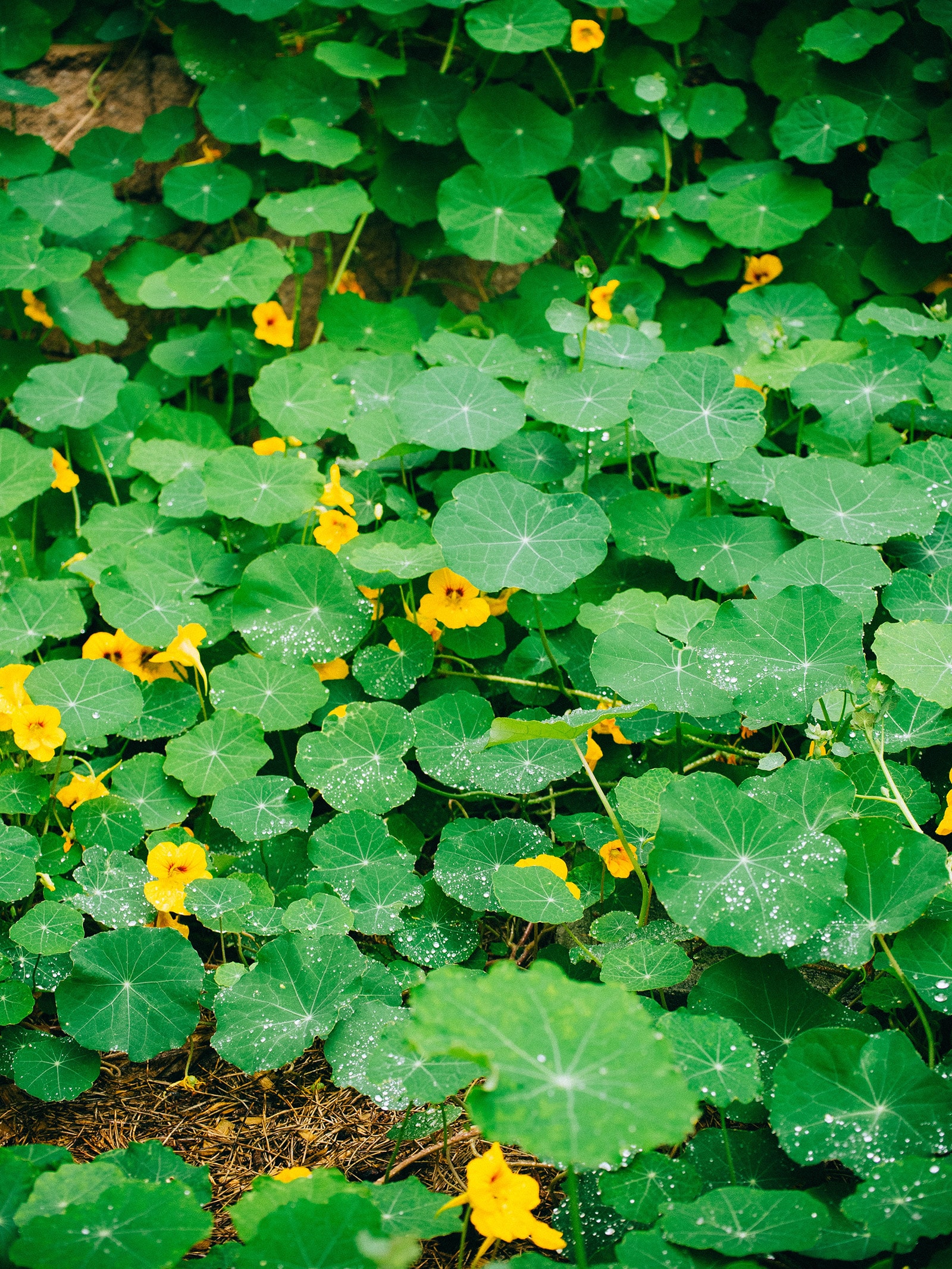
Most people don’t give nasturtiums a second look. They’re sometimes regarded as weeds, as they reseed easily and will grow absolutely anywhere with the least amount of maintenance. They’re often seen as ornamental annuals, blooming through early summer before the heat turns them into a scraggly mess of vines.
Related: Best Edible Ground Covers for Vegetable Gardens
But historically, nasturtiums (Tropaeolum majus) are considered vegetables, hailing from South America and originally cultivated in Peru.
The leaves and flowers contain high amounts of mustard oils, which give them a pungent, peppery flavor and are released when the plant is crushed or chewed. (These are the same oils found in mustard seeds, horseradish root, and wasabi.)
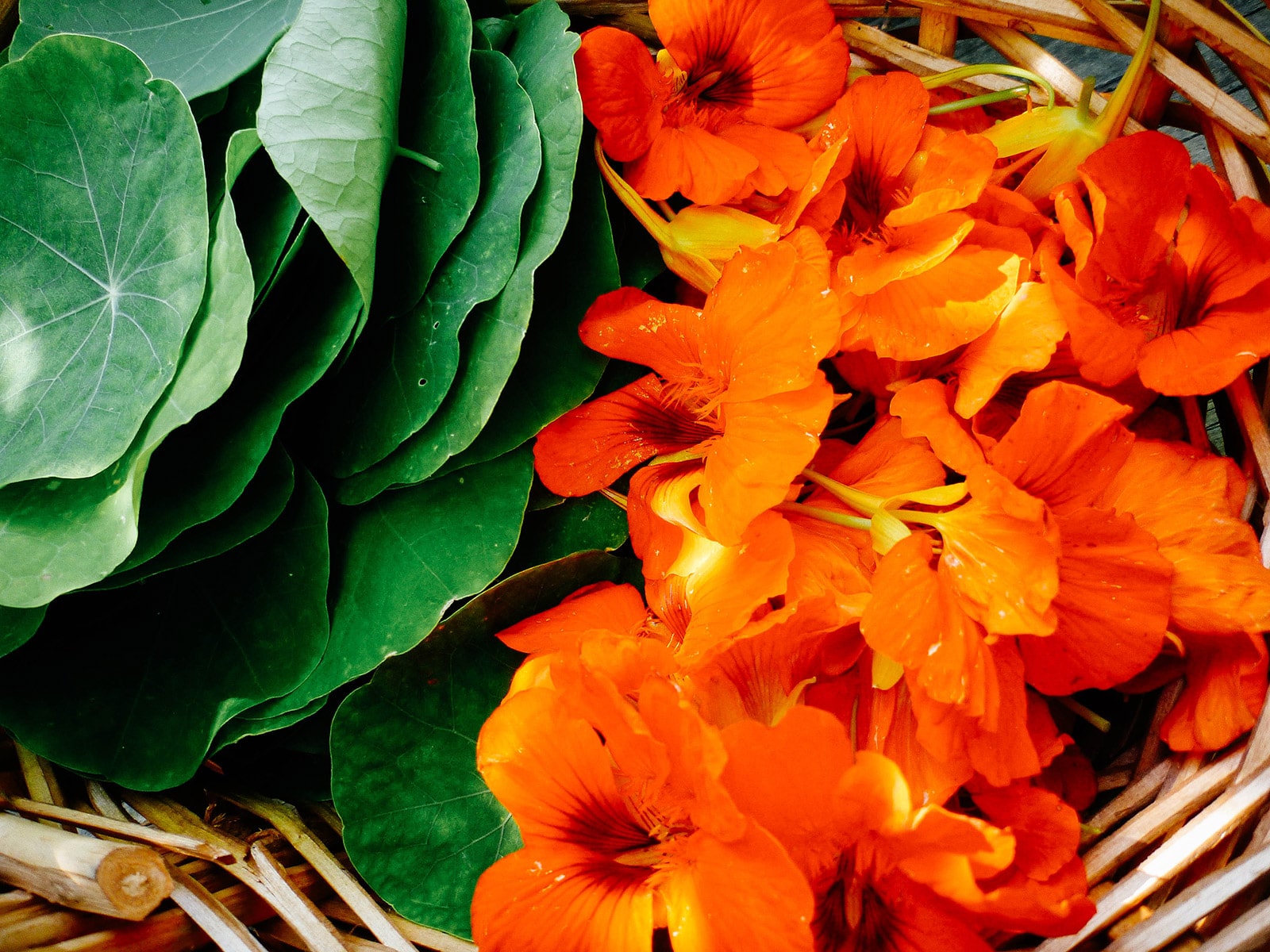
Mustard oils have active antibiotic, antifungal, antiviral, and antibacterial properties, making nasturtiums a natural remedy for everything from skin infections to sinus colds. The leaves are also rich in vitamin C and iron, and anthocyanins in the red and orange flowers make them highly antioxidant.
Read more: Anthocyanin Powerhouse: Pusa Asita Carrots
Just make a simple (yet beautiful) salad with the leaves and flowers to gain the many health benefits of this very underrated plant!
But when I end up with a bumper crop of nasturtiums, my favorite use for them is making pesto. The mustard oils in the plant add a boldness to this recipe that isn’t found in traditional pesto, and it’s such a treat to have homegrown, homemade pesto when it isn’t basil season yet!
So how do you use nasturtium pesto? Almost anywhere you’d normally use basil pesto: spread on a pizza or sandwich, tossed with hot pasta or zucchini noodles (zoodles), smeared onto a piece of toast, or stirred into vegetable soup for a burst of flavor. You can add a dollop of nasturtium pesto onto a steaming baked potato, or thin it out with more olive oil and drizzle it over eggs or roasted vegetables.
Nasturtium pesto may overpower more delicate flavors, so use it sparingly unless you love a little kick!
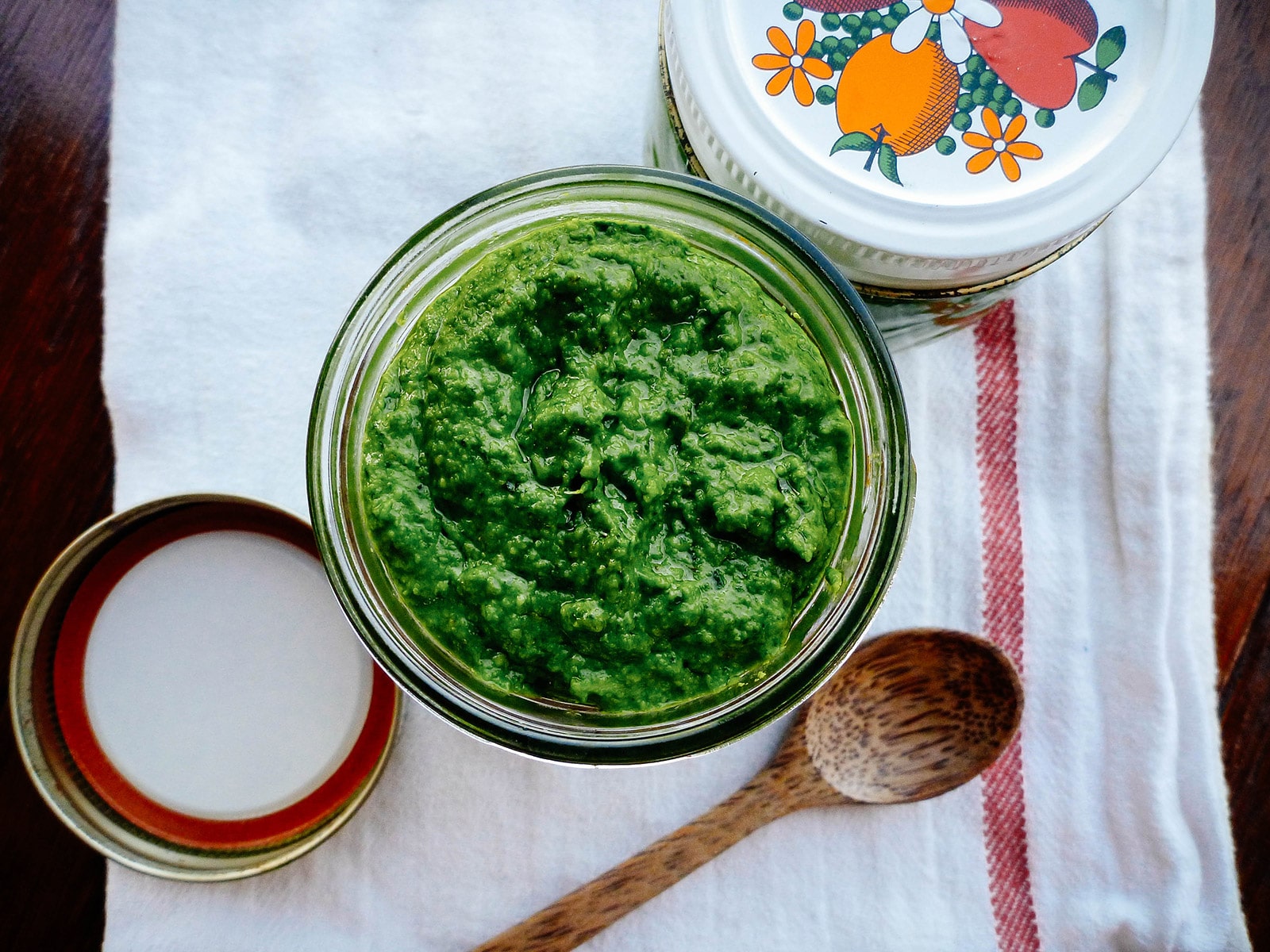
Nasturtium Pesto
Makes 2 cups
Ingredients
4 cups packed nasturtium leaves
2 cups packed nasturtium flowers
1 1/2 cups olive oil
5 cloves garlic
1 to 1 1/2 cups walnuts
1 to 1 1/2 cups shredded Parmesan cheese
Instructions
Pick a basket full of fresh, healthy leaves and flowers without any blemishes. If your plants aren’t blooming yet, using only the leaves is fine too.

Nasturtiums are highly beneficial in the garden for being natural aphid traps, so you’ll want to make sure you’re not harvesting a colony of aphids along with them!
Thoroughly wash and dry the leaves and flowers; tear larger leaves in half.
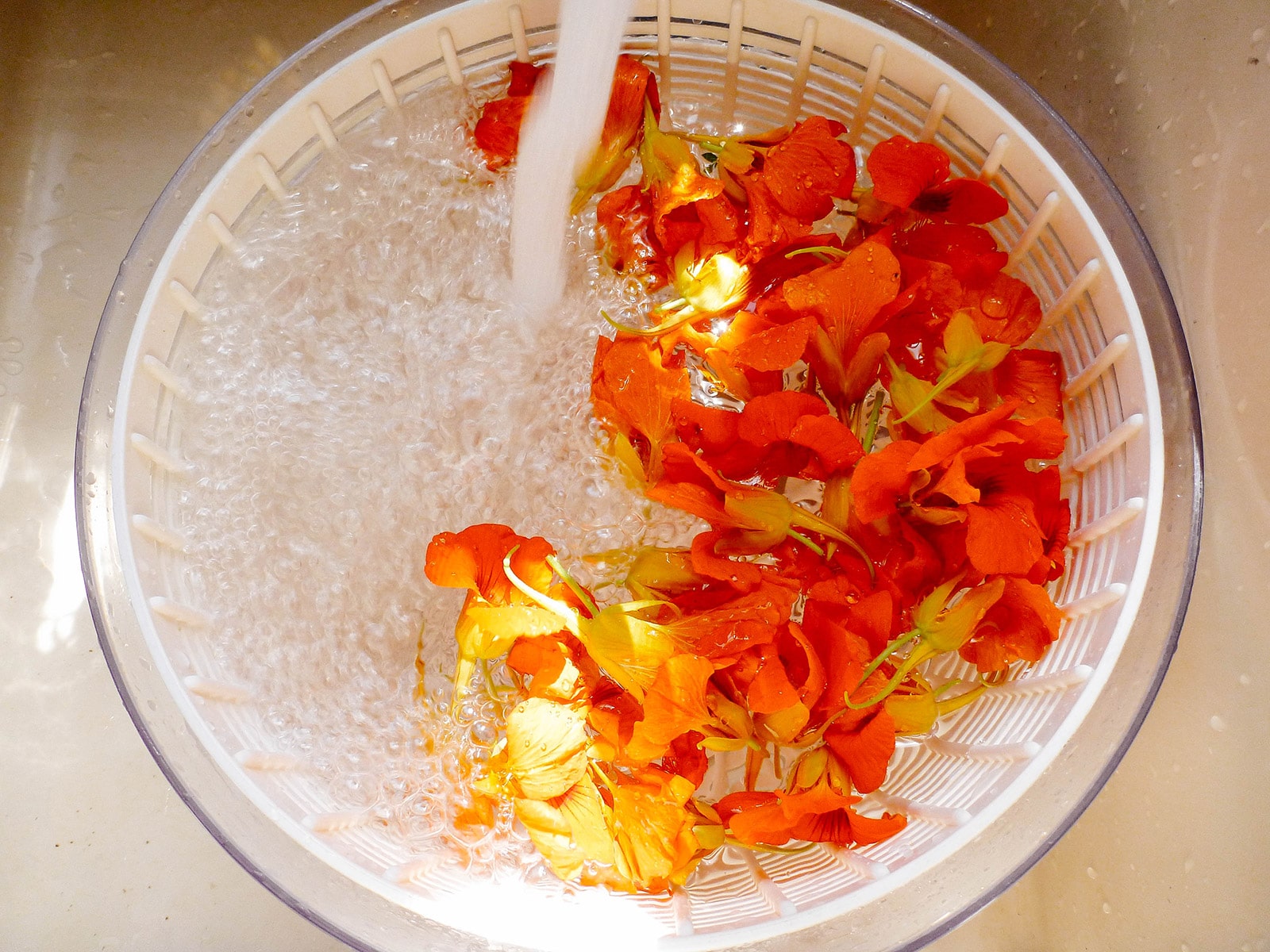

Add the leaves, flowers, garlic, olive oil, walnuts, and Parmesan to a blender or food processor. I like my pesto extra nutty and extra cheesy, so I use the full 1 1/2 cups for each ingredient.

Blend all the ingredients until the mixture is smooth.
Ladle the pesto into small jars, refrigerate, and enjoy! The pesto should keep for up to two weeks.
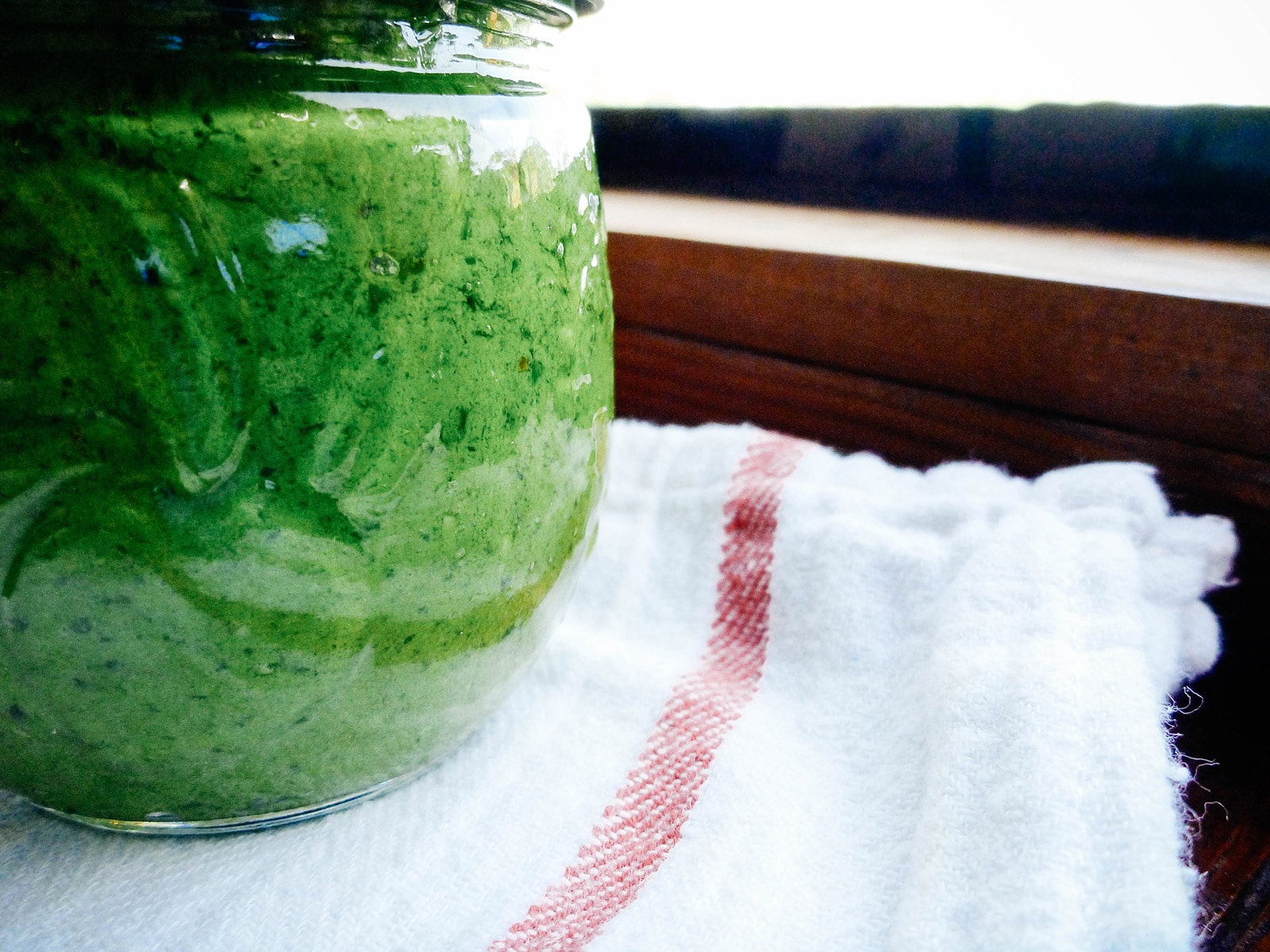
Nasturtium Pesto
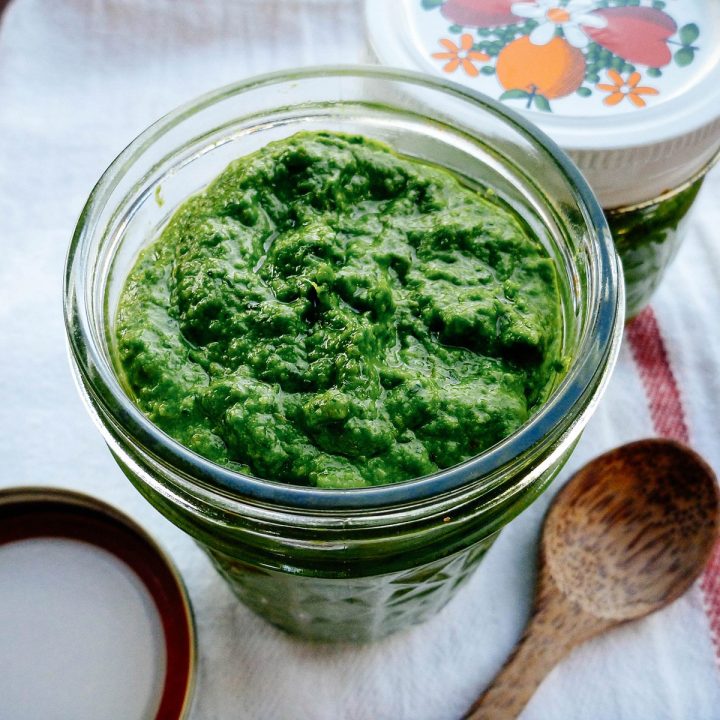
Nasturtiums are often seen as an ornamental flower in the garden, and sometimes even as a weed with how prolific it is, but it's actually a highly nutritious leafy green that can be turned into pesto!
Ingredients
- 4 cups packed nasturtium leaves
- 2 cups packed nasturtium flowers
- 1 1/2 cups olive oil
- 5 cloves garlic
- 1 to 1 1/2 cups walnuts
- 1 to 1 1/2 cups shredded Parmesan cheese
Instructions
- Pick a basket full of fresh, healthy leaves and flowers without any blemishes. If your plants aren’t blooming yet, using only the leaves is fine too.
- Thoroughly wash and dry the leaves and flowers; tear larger leaves in half.
- Add the leaves, flowers, garlic, olive oil, walnuts, and Parmesan to a blender or food processor. I like my pesto extra nutty and extra cheesy, so I use the full 1 1/2 cups for each ingredient.
- Blend all the ingredients until the mixture is smooth.
- Ladle the pesto into small jars, refrigerate, and enjoy! It should keep for up to two weeks.
Notes
Nasturtiums are highly beneficial in the garden for being natural aphid traps, so you’ll want to make sure you’re not harvesting a colony of aphids along with them!
Nutrition Information:
Yield:
32Serving Size:
1 tablespoonAmount Per Serving: Calories: 138Total Fat: 14gSaturated Fat: 2gTrans Fat: 0gUnsaturated Fat: 12gCholesterol: 3mgSodium: 64mgCarbohydrates: 1gFiber: 0gSugar: 0gProtein: 2g
Nutrition information isn’t always accurate.
This post updated from an article that originally appeared on January 15, 2013.


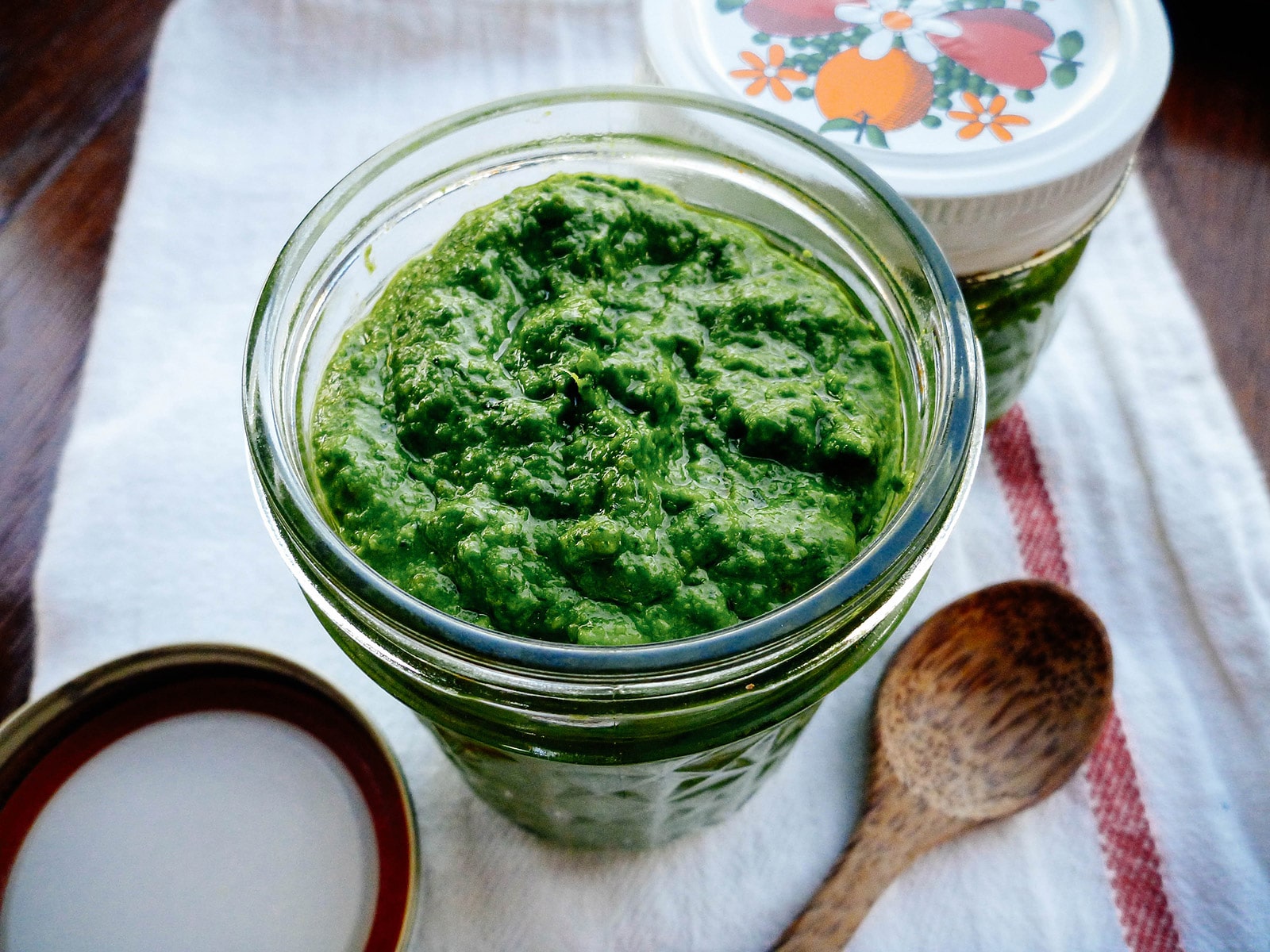













This recipe looks delicious! Can I include the stems though? They have the same peppery flavour as the flowers and leaves!!
I just made this recipe with stems and all. When I stir fry nasturtium I always use the last 15 or so centimetres of the stem. Pods as well. It all got grinded up for the pesto and is delicious
Thanks for the recipe. Yet another use for nasturtiums!
Just made and it’s Fabulous!!!
I did not have walnuts so I used macadamia nuts for the first time in any pesto. I highly recommend.
Thank you for sharing this recipe.
Phenomenal! I recommend adding 1-2 TBS of lemon juice to brighten the flavor/add a little acidity to balance the oil & cheese – she’s right: use the full 1 1/2 C. walnuts and parmesan. And a pinch/plus of salt to taste. BEAUTIFUL, too! Use it as a pistou for soups.
Is this pesto something I might process in a water bath to be given to people as Christmas gifts?
I doubt it – I find water bathing does not do well for pestos – what I do, do, is freeze it and as such it will be good for 6months +
So hoping Linda or someone will reply to my question about pickling the pods with the chewy tough covering on the bigger pods! Remove it or not? I note other comments are months and even years ago! Also that I posted on the WRONG recipe, though both are related to nasturtiums recipes! I don’t have time to check this posting constantly, but would love an answer before I attempt the pickling, Nothing worse than putting a lot time & ingredients in something to learn you goofed it up!
I am so happy to have easily found both of your nasturtium recipes as I have a hanging pot of yellow and orange ones and searched for a way to preserve the fresh pods. I knew they were called ‘Poor Man’s Capers’. After eating several of the very small seed pods, I realized they are actually a tiny bit sweet before the zing hits your nose! I love them! I have noticed though, as they get bigger even though still light green, the outer covering gets tough & chewy and can be peeled off. Has anyone else noticed this? And is it an issue? Perhaps the brining helps and the vinegar? Now that I’ve found your recipes, I need to get picking!
mtn lady in VT
Hi, the outer covering is not an issue when making poor man’s capers. Just follow that recipe as-is, I think you’ll enjoy it!
I’ve always tossed these flowers and leaves into my salads. I love the sweet peppery flavor. I had no idea that they’s make a good pesto.
How amazing! I can’t eat dairy and don’t like cheese much, can the parmesan be replaced with something or just ommitted?
You can omit the cheese entirely. In essence, you’d be making a nasturtium pistou (which is just nasturtium leaves/flowers, garlic, and olive oil pounded together). The nuts are optional as well but add a nice texture in my opinion.
I use nutritional yeast in place of dairy cheese
Omitted is fine.
I made this last year, it was wonderful, and an amazing colour!
Looks like we’ll be having huge nasturtiums again this summer so I,ll be doing it again. Thankyou! 🙂
Enjoy! 🙂
ohhhhh, what a great idea. I love my nasturtium to keep my apple trees happy (and sometimes the chickens) but had no idea what to do with it other than eating it in salad…. brilliant!!!
This is one of my favorite pestos. I love the peppery flavor compared to a typical (sweeter) basil pesto. Enjoy!
It is such a good idea isnt it? 🙂
I had NO idea you could eat the leaves. I’ve eaten the peppery flowers before, what another exciting way to eat them this year!
Also when they go to seed, those are tasty as well.
I pickle the pods: http://gardenbetty.com/2013/01/poor-mans-capers-pickled-nasturtium-pods/
Can’t wait to try this next year MT@theGardenBetty:You can make pesto out of almost anything green. Nasturtium Pesto http://t.co/m958QR5m7w
You can make pesto out of almost anything green… including these “weeds”! Nasturtium Pesto http://t.co/cpwgmoR0gR #gardenchat #recipe
tried this and it was fantastic, thankyou!
Love this one. I also blend basil and nasturtiums and make batches for the freezer – with or without garlic and cheese. And using all varieties of nuts and seeds. It makes for a great savory breakfast muffin. Nancy
Hi Garden Betty,
I am a school teacher from beautiful New Zealand and I just wanted to share with you that my children at school have now successfully made – and gobbled up – large quantities of nasturtium pesto from your recipie! Nastutium grow like a weed here too and we have grown them in our school vegetable garden as companion plants.I’m looking forward to pickling the pods at some stage and since we’re growing carrots we’ll be blending a carrot salsa at some stage too! Thanks for your inspiration! Rachel
excellent. I’ll be making this very soon.
i just made a batch of this because my nasturtiums are overthrowing my tomatoes! after i scraped almost all of the pesto out of the blender, i threw in some of last nights leftover chicken. i am currently enjoying a chicken-pesto-lettuce-wrap… and it is delicious! thank you garden betty!
This sounds great! I am growing tons of Nasturtiums in among my curcurbits (cucumbers, melon, squash, etc.) because I’ve read that they will deter cucumber beetles, so I should have lots flowers and leaves to use! Thanks so much!
Made a jar of nasturtium pesto today with my backyard nasturtiums. Might be my best batch yet…! http://t.co/yXFrGuLJgH #gardenchat #recipe
Thanks Nancy! My nasturtiums grow wild year-round, except for fall, so I’m always harvesting a different part of the plant each season depending on when they’re blooming or seeding. 🙂
I just discovered your recipe for pesto. How cool is that?? I have nasturtiums that grow wild spring to summer and always felt I wasted them! Now, I have poor mans’ capers and pesto to look forward to! Great blog…love it.
I live in Costa Mesa, so it is fun to see someone else in CA.
Nancy
http://wildoakdesigns.blogspot.com
What to do with all those nasturtiums? Look no further! Thanks Garden Betty http://gardenbetty.com/2013/01/nasturtium-pesto/
Jun Iguchi liked this on Facebook.
Michael J. Bissanti liked this on Facebook.
Would never have thought of doing this, thank you!
Enjoy!
Kieran Creevy liked this on Facebook.
Aagaard Farms liked this on Facebook.
April Stacey liked this on Facebook.
Anne-Paule Flavigny liked this on Facebook.